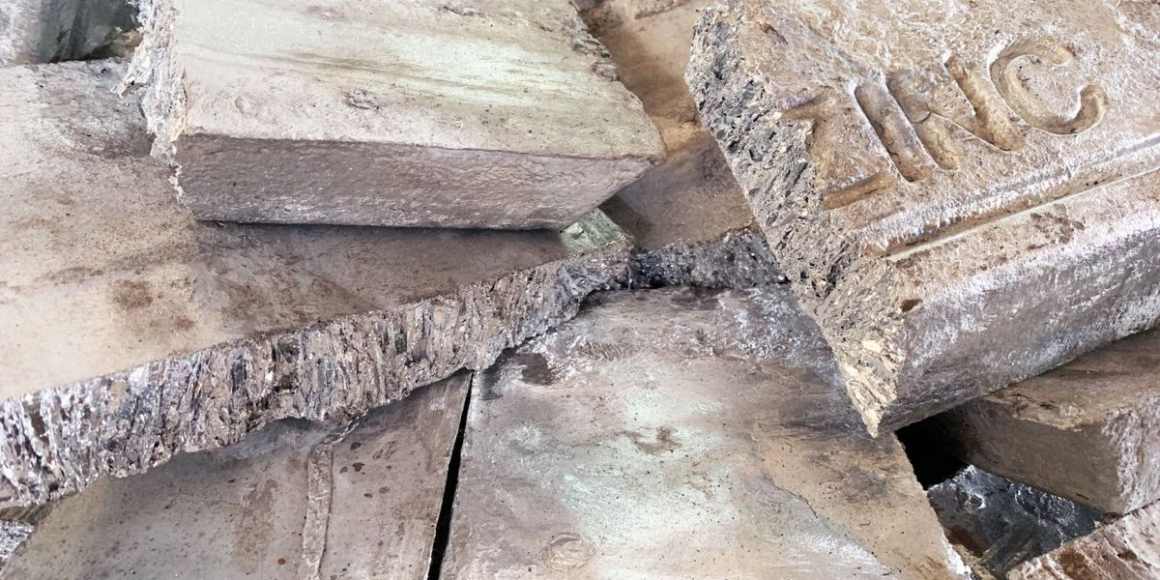2023 was volatile for zinc — as the bottom fell out of the market, it approached its lowest point since July 2020.
As 2024 began, the base metal’s price was in the US$2,500 per metric ton (MT) range, but it quickly slid to its year-to-date low of US$2,300 on February 5. Though zinc saw gains through March, it ended Q1 relatively flat.
Q2 began with zinc at US$2,479, but it gained as momentum picked up across commodities markets. Zinc reached a year-to-date high of US$3,139 on May 21 before retreating to close the quarter at US$2,937 on June 28.
The zinc price saw increasing downward pressure into July, and was at US$2,685 on August 1.
Zinc was facing carried-over pressure from 2023 as the year began, still feeling the effects of a surplus.
LME zinc stocks had only marginally decreased to 261,850 MT by the end of June.
Even though refined metal increased year-on-year, mine production was down during the first four months of the year, with the ILZSG reporting that 3.76 million MT were extracted compared to 3.89 million MT during year-ago period.
This oversupply has had trickle-down effects, with treatment and refining charges collapsing at smelting operations.
“A large concentrates deficit and falling treatment charges have defined the zinc market in 2024 H1. The main impact of this has been felt by Chinese zinc smelters, many of whom have cut back due to issues with sourcing raw materials and a lack of profitability,” Helen O’Cleary, zinc market specialist with CRU Group, wrote to the Investing News Network.
While zinc has faced headwinds in 2024, a rally saw the metal reach US$3,057 on May 20, a 15 month high.
The surge in pricing came alongside broad gains in commodities and was due to a number of factors.
“Risk-on investor buying led to a sharp rally in zinc prices in April and May, as bullish sentiment on future copper demand related to the energy transition and AI data centres boosted the LME basket of metals,” O’Cleary said.
As it is used to make galvanized steel, increased demand from the real estate, construction and automotive sectors could provide a critical boost to zinc demand and prices.
However, ultimately for zinc the fundamental conditions weren’t there to sustain higher prices.
“Zinc’s price was briefly lifted above $3,100/t, but overshot fundamentals, in our view. While we expect the concentrates deficit to be supportive of zinc’s price this year, relatively high refined stocks and a wide contango point to a refined market that remains well supplied,” O’Cleary explained.
The conditions for zinc aren’t expected to see an immediate rebound.
In the meantime, O’Cleary sees the zinc price remaining flat, with supply staying restricted as a buildup in stockpiles begins to work through the market and fundamentals become more balanced.
“We expect zinc’s price to trade on either side of US$3,000/t in H2,” she commented.
“A still-tight concentrate market will continue to negatively impact Chinese smelter profitability, and this could lead to an increase in China’s refined zinc imports,” O’Cleary added.
Securities Disclosure: I, Dean Belder, hold no direct investment interest in any company mentioned in this article.
Editorial Disclosure: The Investing News Network does not guarantee the accuracy or thoroughness of the information reported in the interviews it conducts. The opinions expressed in these interviews do not reflect the opinions of the Investing News Network and do not constitute investment advice. All readers are encouraged to perform their own due diligence.


Leave a Reply